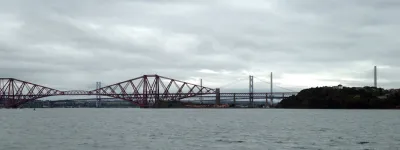Everything about a road sign is supposed to provide you with useful information, starting with the shape of the sign itself.
There are six basic shapes for all UK road signs, and each one carries a different meaning. Explained here are all six - along with examples of the different signs that use each shape.
Triangles
Triangular signs are always warning signs, and without exception all triangular signs will have a thick red border to reinforce the fact that they are alerting you to something potentially dangerous.
Generally a symbol inside the triangle will explain the danger, but a few warning signs contain a word where no symbol would convey the same meaning. For unusual hazards without a standard symbol, a generic warning sign with an exclamation mark will have an explanation of the danger written underneath.
A small number of signs use the triangle the other way up, with the flat edge at the top. These inverted triangles are special warnings used where you will have to slow or stop for another stream of traffic that has priority over you.
The most familiar one is Give Way, which is one of the UK's most common road signs. The others are empty, with no symbol inside, and are used as a warning about a Give Way or Stop sign up ahead.
Circles
Circular signs are always instructions, and will either tell you that you must do something or that you must not do something.
In every case a blue circle means you must and a red circle means you must not. Circular signs generally indicate rules or restrictions that are backed up by law.
There are some exceptions, including grey circles with diagonal bars, indicating the end of a restriction, and the familiar black-and-white sign indicating the start of the National Speed Limit.
Rectangles
Rectangular (or square) signs carry information.
Some are information about the road itself - telling you that it's a one way street, or about a distant weight restriction, or explaining the use of parking bays.
Others are information about directions and destinations, showing places that can be reached at a junction or the distance to towns and cities.
Pentagons
Pentagonal signs are really part of the family of rectangular signs. Direction signs that tell you to turn left or right immediately will have a pointed end, making a five-sided sign. These are called flag signs, and they are placed at the point where you need to make a turn.
Octagons
There is only one octagonal sign and it means you must stop. Its shape is unique so that, if its face is completely obscured by snow, it's still obvious what it's trying to tell you.
The instruction to stop is a legal and absolute requirement - even if you can see the way is clear, you still need to come to a complete stop before proceeding.
Diamonds
Diamond shaped signs are specifically for the attention of trams, and have a special shape so that instructions for street-running rail vehicles are visibly different to those for other traffic.
Tram signs include speed limits and a special sign containing an inverted triangle used at junctions.
